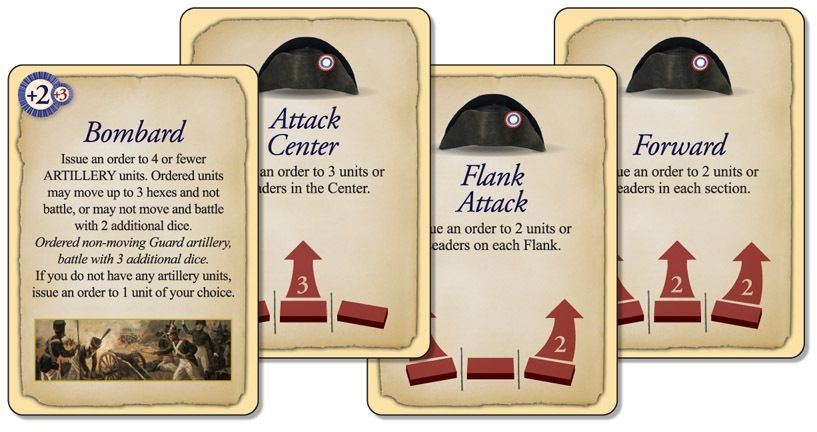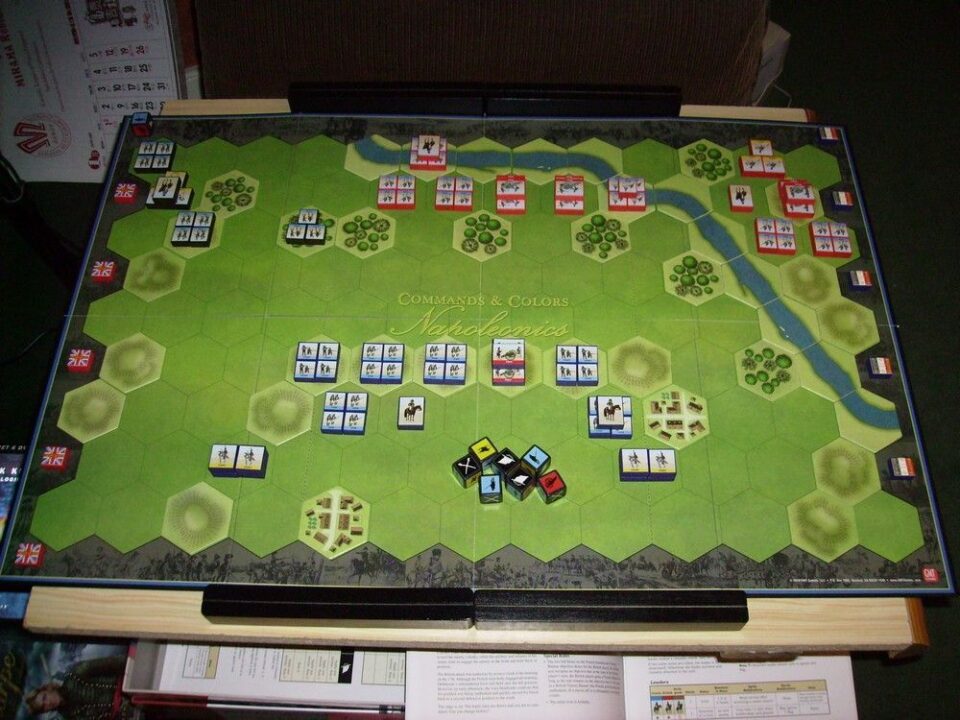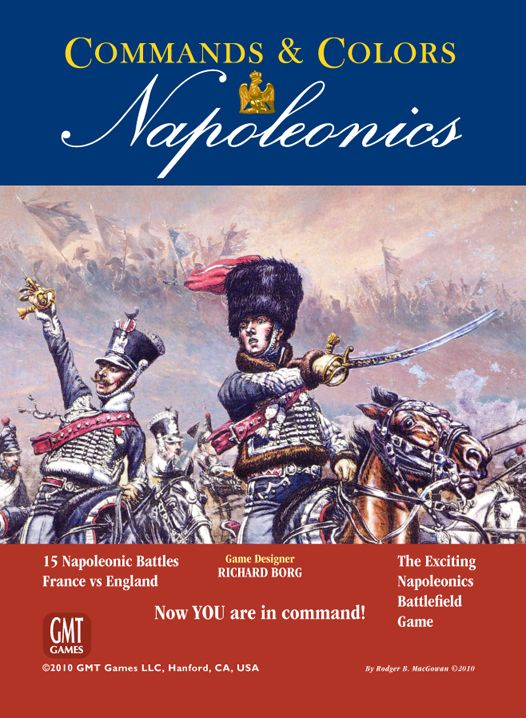Overview
Welcome to my board game corner where today’s subject is the intricately designed Commands & Colors: Napoleonics. Sharing the stage with historical authenticity and a canvas ripe with strategy, this review dives into the heart of war waged on a board of wooden blocks and cards. Engaging narratives often unfurl from the roll of dice, while friends and family maneuver units across the living room battlefield. This is a game that stirs the tactician’s mind with each calculated move. As you read, peak behind the musket smoke to discover how this game marries historic warfare with thrilling table-top spontaneity.
How It Plays
Commands & Colors: Napoleonics transports players back to the tumultuous battlefields of the Napoleonic era. The essence of play, which occurs on a hex grid, commands attention as each game unfolds into a unique narrative of war.
Setting up
Players begin by choosing a battle scenario, setting up the historical map with pre-determined terrain features and armies. Units are composed of various infantry, cavalry, and artillery, placed according to the orders of battle.
Gameplay
Turns proceed with the play of command cards that allow movement of troops and order attacks. Tactical choice and the shrewd use of cards can swing the tide of battle. The dice resolve combat, introducing an exciting, albeit nerve-wracking, element of chance.
Winning the game
Victory is achieved by fulfilling scenario-specific objectives, often through the elimination of enemy units or the capture of strategic locations. The player who best manages their hand, anticipates the opponent’s moves, and capitalizes on the turns of war will emerge the victor.
Want to know more? Read our extensive strategy guide for Commands & Colors: Napoleonics.
Unveiling Tactical Wonders
Last week’s game night had us rendezvousing with history in Commands & Colors: Napoleonics. The way the mechanics intricately meld to form a deep strategic experience had us hooked from the get-go. Furthermore, I particularly relish the myriad tactical choices each card serves up. Predictability isn’t a neighbor here, making every decision crunch deliciously heavy.
Choices That Shape Battles
As we delve deeper into the game, every maneuver felt pivotal. I reminisce a moment from our previous session where a single well-planned infantry advance turned the tides under a relentless cavalry charge. Moreover, the thoughtful consideration of when to play which card, and how to maximize the dice outcomes based on unit position, echoes the Napoleonic sagacity.
Strategic Commitment
Contrary to initial appearances, the game consistently tests our foresight. Transitioning from the quick skirmishes to pulling off grand strategies amplified the thrill. Evidently, acting on the fly while holding to a long-term plan signified by the ever-depleting deck, affirmed our game board endeavors with satisfaction rare in many others. Unquestionably, it weaved exemplary narratives through wooden blocks and battle lore.
Treading forward, let’s march into the nuances of Unit Types and Abilities with our flags held high.

The Battle’s Backbone: Unit Diversity
I recall aligning my infantry for a decisive attack during a recent playthrough of Commands & Colors: Napoleonics. The sheer variety of units at my disposal, each with their unique abilities, turned a simple maneuver into a chess-like choice of offensive and defensive moves. Artillery capable of decimating formations from afar, light infantry adept in skirmishing, and heavy cavalry making bold charges – the strategies you can execute seem endless.
Abilities Shaping Strategy
Within the gameplay sessions, certain moments stood out, for instance when my line infantry survived a relentless assault thanks to their fortitude. It’s the individual unit abilities that elegantly alter the strategic tapestry of every battle, making every confrontation a nuanced dance of military acumen.
In the next section, we’ll march onto the varied Battlefield Terrain Impact, an aspect that deeply influences the flow of war and rewards tactical foresight.

The Battlefield’s Tactical Heart
In Commands & Colors: Napoleonics, the varied battlefield landscapes are more than just window dressing; they’re central to the art of war. Reflecting on numerous playthroughs, the rise or fall of my strategies often hinged on the clever use of terrain. Firstly, Terrain as Obstacles, ever-present hurdles strategically scattered across the battlefield, these natural formations forced me to think on my feet. My cavalry could become hopelessly bogged down by an unforeseen grove or ridge, dictating a shift in tactics mid-advance.
Secondly, harnessing Terrain as Advantage. Whenever I managed to orient my forces to occupy a hill or align behind defenses, the tide of battle perceptibly shifted. This essential element of Commands & Colors: Napoleonics keeps engagements dynamic. In essence, the terrain’s impact requires astute consideration for a well-earned victory.
My final verdict? For anyone who cherishes strategy molded by the lay of the land, I wholeheartedly recommend this engaging encounter with history.
Conclusion
Concluding our journey through the disciplined ranks and rolling dice of Commands & Colors: Napoleonics, we’ve skirmished across an array of tactical terrains, maneuvered through the depths of units’ distinctions, and navigated the war-torn path to victory. Each match paints a fresh scene on the canvas of historic conflict, whispering secrets of strategy for us keen enthusiasts to discover. It’s a tableau alive with challenges and charm, both accessible to newcomers and enthralling for tacticians. For its ability to consistently reignite the wargamer’s spark with its elegantly intuitive mechanics and its laudable expanse of replayability, this gem deserves its revered space on the strategy game shelf.


